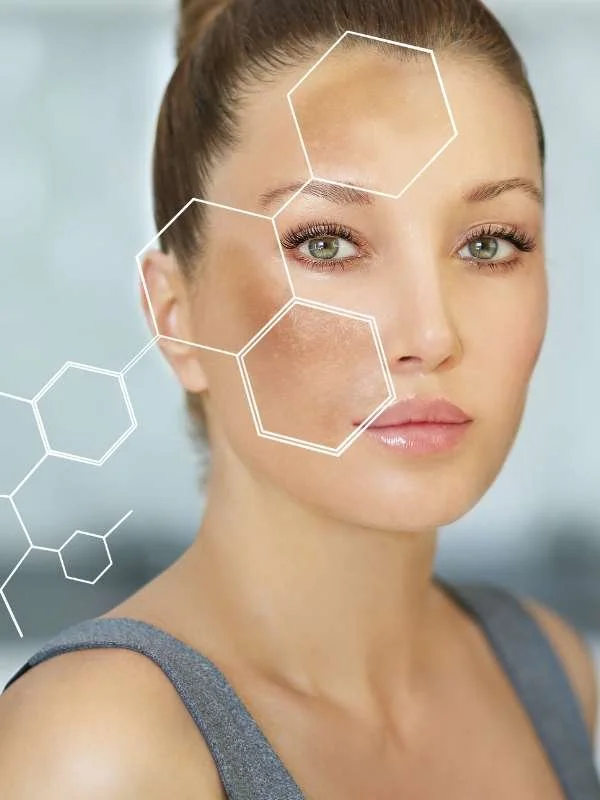Hyperpigmentation vs. Melasma: Understanding the Differences and Best Treatment Approaches
When it comes to skin conditions, hyperpigmentation and melasma often come up in conversations, typically surrounded by a mix of facts and misconceptions. Although they share some similarities, such as the darkening of the skin due to an excess of melanin, these conditions differ significantly in causes, characteristics, and treatment strategies. This detailed guide will explore everything from the root causes and appearances to the most effective treatments for each condition.
What Is Hyperpigmentation?
Hyperpigmentation refers to the darkening of an area of skin caused by the overproduction of melanin, the pigment responsible for skin and hair colour. This broad term encompasses various forms of skin darkening, including age spots, liver spots, and post-inflammatory hyperpigmentation. It can affect individuals of any skin tone, though certain forms are more prevalent in darker skin.
Causes of Hyperpigmentation
Hyperpigmentation can result from several factors:
Sun exposure: UV rays stimulate melanin production.
Inflammation: Skin injuries like acne, burns, or abrasions can lead to darkened skin areas once healed.
Medications: Certain drugs, such as antimalarials and anti-seizure drugs, can induce hyperpigmentation.
Medical conditions: Diseases like Addison's disease can affect melanin production.
Understanding Melasma
Melasma is a type of hyperpigmentation that primarily affects women and is frequently associated with hormonal changes. It typically presents as symmetrical, blotchy, brownish facial pigmentation.
Triggers for Melasma
Hormonal changes: Common in pregnancy, with oral contraceptives, or during hormone therapy.
Sun exposure: UV radiation can exacerbate the visibility of these patches.
Comparing Appearance and Affected Populations
Appearance
Hyperpigmentation: Varies in size and can appear anywhere on the body.
Melasma: Usually appears as larger, symmetrical patches on the face, particularly the cheeks, bridge of the nose, forehead, and upper lip.
Affected Populations
Hyperpigmentation can affect anyone but is more prevalent in individuals with darker skin tones due to higher melanin levels.
Melasma: More common among women, especially during hormonal milestones such as pregnancy.
Effective Treatments for Hyperpigmentation and Melasma
Understanding the nuances between hyperpigmentation and melasma can guide you to the most effective treatment options. Here are some clinically proven methods:
BioRepeel
This innovative approach uses trichloroacetic acid to exfoliate the skin and lighten dark spots. This procedure helps rejuvenate the skin and reduce the appearance of pigmentation.
Laser Carbon Peel Treatments
These treatments use targeted laser energy to break down excess melanin in the skin. It's effective for treating localized hyperpigmentation and can result in even skin tone.
At-home Skincare
Daily skincare routines play a crucial role in managing and preventing the appearance of dark spots. Products containing hydroquinone, niacinamide, and retinoids are recommended to suppress melanin production and enhance skin renewal.
The Role of Sun Protection
Regardless of the treatment type, sun protection is crucial. A broad-spectrum sunscreen with an SPF of 30 or higher is essential to prevent further darkening and protect the skin from UV damage.
Lifestyle Modifications
Incorporating lifestyle changes such as wearing protective clothing and seeking shade can complement your treatment regimen, reducing the risk of recurrent hyperpigmentation.
Professional Guidance
Always consult a dermatologist for a tailored treatment plan for your specific condition and skin type. This ensures you use the right products and treatments correctly.
Both hyperpigmentation and melasma require a thoughtful treatment strategy that includes professional treatments and daily skincare routines. While there's no cure, these conditions can be effectively managed with the right approach. Consistent sun protection and specific treatments like BioRepeel, laser therapies, and at-home skincare can significantly improve skin appearance.
Remember, ongoing care and protection are the key to maintaining vibrant, healthy skin. Consulting with a skin care professional can provide personalised advice and solutions tailored to your skin's needs, helping you achieve and maintain clear, even-toned skin.


